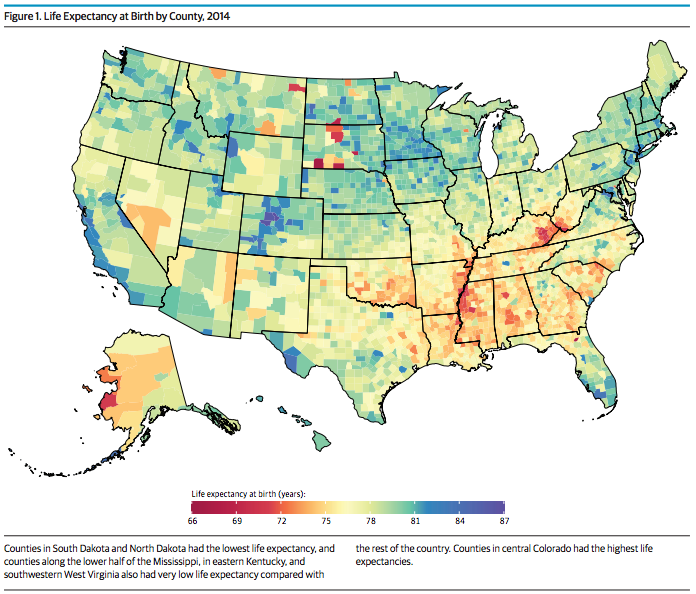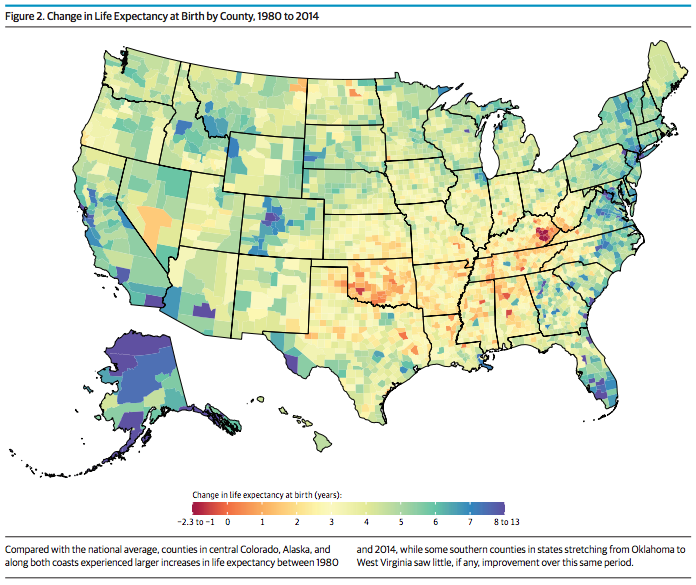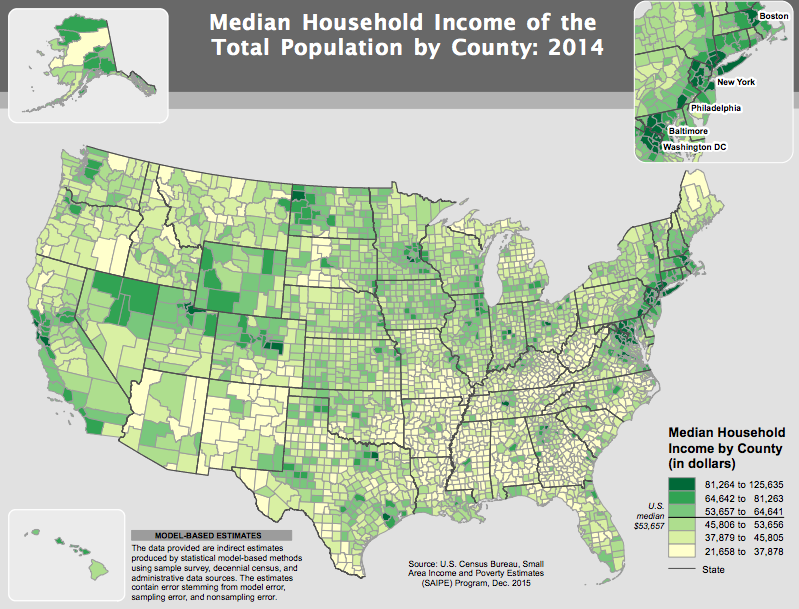Where You Were Born Changes When You Die

By:
The average person born in Breckenridge, Colorado, can expect to live until their late 80s, according to a new life expectancy analysis.
 JAMA Internal Medicine - jamanetwork.com
JAMA Internal Medicine - jamanetwork.com
But about 1,300 miles away — in the small town of Booneville in Kentucky's Owsley County — locals die almost 20 years earlier, on average. Indeed, Owsley County is one of 13 counties nationwide where the average life span has decreased over the last three decades.
 JAMA Internal Medicine - jamanetwork.com
JAMA Internal Medicine - jamanetwork.com
Geographic disparities in life expectancy in the U.S. have increased every year since 1980, researchers at the University of Washington determined. But their study, published this week in JAMA Internal Medicine, also sought to explain the trend.
Using federal databases, the researchers first collected death records and census information from 1980 to 2014. Then they looked at county-level data in three broad categories known to influence mortality: behavioral risk factors such as obesity, smoking, and exercise; socioeconomic factors such as race and income; and access to quality health care.
The researchers also identified behavioral risk factors as the top contributor to "life span inequality," accounting for 72 percent of the geographic disparity. Socioeconomic factors accounted for 60 percent, and health care accounted for 27 percent of the trend.
"The inequality in health in the United States — a country that spends more on health care than any other — is unacceptable," Dr. Christopher Murray, a co-author of the study, said in a press release. "Every American, regardless of where they live or their background, deserves to live a long and healthy life."
If we allow trends to continue as they are, the gap will only widen between counties.
The study offers new insights into a public health phenomenon that made headlines earlier this year.
 eric molina/Wikimedia - wikimedia.org
eric molina/Wikimedia - wikimedia.org
In March, a study published in the Brookings Papers on Economic Activity called attention to "deaths of despair" — deaths attributed to drug and alcohol use and suicide, which have been rising at an alarming rate among white, middle-aged Americans without college degrees since at least 1999. Princeton University researcher Anne Case, a co-author of the study, shared her theory about the trend in an interview with NPR:
"These deaths of despair have been accompanied by reduced labor force participation, reduced marriage rates, increases in reports of poor health and poor mental health. So we are beginning to thread a story in that it's possible that [the trend is] consistent with the labor market collapsing for people with less than a college degree. In turn, those people are being less able to form stable marriages, and in turn that has effects on the kind of economic and social supports that people need in order to thrive."
This new research suggests that the risk factors that are principally responsible for lower life spans directly overlap with socioeconomic factors. The regions where average life expectancy has declined since 1980 are also generally low-income, high unemployment areas.
 U.S. Census - census.gov
U.S. Census - census.gov
"Looking at life expectancy on a national level masks the massive differences that exist at the local level, especially in a country as diverse as the United States," said Laura Dwyer-Lindgren, lead author of the study. "Risk factors like obesity, lack of exercise, high blood pressure, and smoking explain a large portion of the variation in life spans, but so do socioeconomic factors like race, education, and income."
Researchers hope that these insights will inform public policy decisions, particularly those that aim to reduce "deaths of despair" in at-risk populations. By shaping policies that improve public health in low life expectancy regions, experts predict that socioeconomic conditions will also improve.
